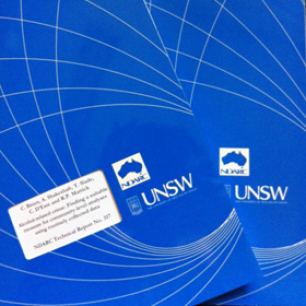NDARC Technical Report No. 201 (2004)
EXECUTIVE SUMMARY
In Australia ecstasy is the third-most popular illicit substance (after cannabis and amphetamines, with patterns of increasing use compared with other illicit drugs over the last 5 years. Recent anecdotal evidence suggests that it is becoming increasingly popular among ecstasy users to attempt to negate certain side-effects through the concomitant use of pharmaceutical drugs or supplements. This is of concern, as some of these ecstasy-pharmaceutical combinations can have potentially serious health consequences.
This study recruited 216 ecstasy users, the majority of whom were from the Sydney metropolitan area. Generally, this sample was young, well educated, and likely to be in some form of paid employment. Males were slightly overrepresented within the sample. Consistent with similar recent studies, the average frequency of ecstasy use for this group was about ten days in the last six months, although this ranged from one day in the last six months to four days per week. About one quarter of the sample had deliberately taken a pharmaceutical substance for its putative effects on the euphoric effects or recovery from ecstasy use. Viagra and benzodiazepines were the most commonly used pharmaceutical substances, the former almost always used for sexual purposes and the latter usually for its calming properties. Anti-depressant medication was also common amongst this sub-group of people, as it was purportedly beneficial in increasing the strength of the ecstasy ‘high’ and in assisting with the ‘comedown’ period.
Among those reporting symptoms associated with concomitant use of ecstasy and antidepressants were more likely than those using ecstasy alone to report potentially serious effects such as muscle rigidity; nystagmus; dizziness; headache; and profuse sweating. Those who reported using pharmaceuticals were significantly more likely to be male, had more ‘apparent’ years of use and were more likely to have injected party drugs. This suggests the need for particular harm reduction messages around serotonin syndrome for this high risk group. The use of a large range of pharmaceuticals, in a variety of combinations for contradictory purposes suggests that there is a need for harm reduction information for ecstasy users regarding the risks associated with the mixture of ecstasy and other “party drugs” with pharmaceuticals and supplements. Particular attention should be paid to informing users of the potentially fatal serotonin syndrome that is likely to arise from combining ecstasy with the SSRI and MAOI groups of antidepressants or these antidepressant groups with each other. In addition, given the early stage of the research on the products that may have a role in protecting users from the neurotoxic effects of ecstasy use the harm reduction messages should contain techniques for minimising the harms that do not involve the use of other drugs or products.
The most common source of these pharmaceuticals was from friends and this study has raised a number of concerns for primary health care practitioners and pharmacists, particularly education on how and why ecstasy and pharmaceutical are used by this group and to question young males in particular on their need for Viagra, antidepressants and sedative-hypnotics. Accurate information from medical practitioners and pharmacists to ecstasy users may reduce this diversion and unsafe use of pharmaceuticals; improve screening for ecstasy-related symptoms; and reduce the likelihood of the additional health risk of mixing ecstasy with other illicit drugs; anti-depressants and products that affect the serotinergic pathways. The public health issues in driving while intoxicated and high risk sexual behaviours should also be addressed.
Citation: Copeland, J., Dillon, P. and Gasciogne, M. (2004) Ecstasy and the concomitant use of pharmaceuticals, Sydney: National Drug and Alcohol Research Centre.


